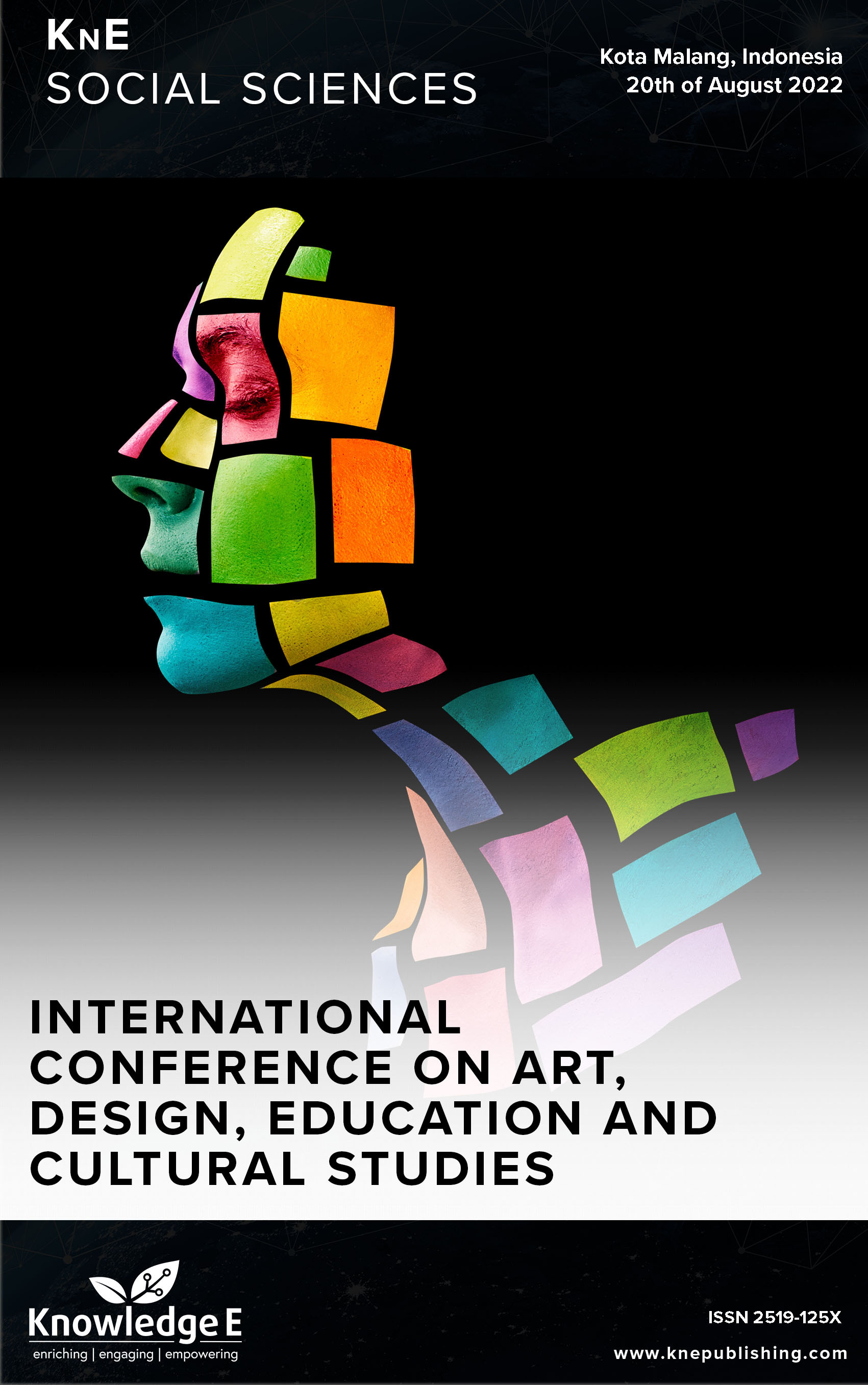A Study of the Current Position of Traditional Chinese Hanging Lanterns Among Young Chinese
DOI:
https://doi.org/10.18502/kss.v8i15.13905Abstract
Traditional Chinese lanterns were invented during the Eastern Han Dynasty and were originally intended to be sources of light. To most Chinese people, traditional Chinese lanterns represent joy, good fortune & social status. However, they are decreasing in popularity and most Malaysian young Chinese regard them as a dispensable decorative item for festivals. The usage of traditional Chinese hanging lantern is on the decline – studies have shown that the advent of modern lighting technology has thrown the production and useage of traditional Chinese lantern into crisis and turned it into an obsolete product. Through content analysis, researchers evaluated the current situation and explored the issues surrounding traditional Chinese hanging lanterns among young Chinese people. Results indicated that Malaysian young Chinese gradually lost interest in traditional Chinese hanging lanterns due to the lack of enthusiasm towards inherited Chinese culture and an increase in available exotic lighting accessories. This study may serve as a supplementary reference in the research and development of new cultural products, providing other researchers with a clearer direction to make their work easier and faster.
Keywords: Traditional Chinese lanterns, Ramadan lanterns, anous, Kandeel
References
[2] Malaysia Information Religion. [Online]. 2016. Available from: https://www.malaysia.gov.my/portal/content/30116
[3] Hays J. Religion in Malaysia. [Online]. June 2015. Available from: http://factsanddetails.com/southeast-asia/Malaysia/sub5_4c/entry-3154.html
[4] Buddhism in Malaysia. [Online]. 2 July 2012. Available from: https://www.nalanda.org.my/buddhism-in-malaysia/
[5] Reda L. The evolution of the Ramadan Fanous. [Online]. 13 Jun 2018. Available from: https://www.egypttoday.com/Article/15/52059/The-Evolution-of-the-Ramadan- Fanous
[6] Harrison P. How did the Ramadan lantern become a symbol of the holy month?[Online] 20 May 2020. Available from: https://english.alarabiya.net/features/2015/06/19/Ramadan-is-here-light-upyour- lanterns
[7] Egyptians dote on lanterns to light up Ramadan. [Online].” 18 May 2018. Available from: https://www.chinadaily.com.cn/a/201805/18/WS5afe37a0a3103f6866ee9352. html
[8] Bagchi T, Baranda Y. Celebration of Diwali Festival in Some Bhil Village of Udaipur, Rajasthan. J Anthropol Surv India. 2018;67(2):239–51.
[9] Deepavali. [Online]. n.d. Available from: https://www.wonderfulmalaysia.com/faq/ deepavali.htm
[10] Pathak S. Here’s how India is celebrating Diwali. [Online]. 4 Nov 2021. Available from: https://www.npr.org/2021/11/04/1052383178/heres-how-india-is-celebrating-diwali
[11] Baral B and Rakshitha. Traditional Indian lanterns - Nasik, Maharashtra. [Online]. n.d. Available from: https://www.dsource.in/resource/traditional-indianlanterns- nasik-maharashtra/introduction
[12] Zi L. Several theories about the origin of lanterns. [Online]. 23 Mar 2019. [cited 26 Dec 2020]. Available from: http://www.86lsw.com/whls/605.html.
[13] Yu J, Zhang Z. Initial analysis on inheritance and development of lantern culture in product design. Packaging Engineering. 2017;38(12):159–63.
[14] Ibrahim A. The story behind Ramadan lantern. [Online]. 8 May 2019. Available from: https://dailyfeed.dailynewsegypt.com/2019/05/08/the-story-behind-ramadanlantern/
[15] Hsieh HF, Shannon SE. Three approaches to qualitative content analysis. Qual Health Res. 2005 Nov;15(9):1277–88.
[16] Rosengren KE. Advances in Scandinavia content analysis: An introduction. Advances in content analhysis. Baverly Hills. Sage. 1981:9-19.
[17] Downe-Wamboldt B. Content analysis: method, applications, and issues. Health Care Women Int. 1992;13(3):313–21.
[18] Khalifa GD. Some Unpublished Lanterns In The Islamic Art Museum In Cairo “Analytical, Historical and Artistic Study”. EUREKA: Social and Humanities. 2020;(2):23–35.
[19] Khalil M. Ramadan lantern… historic symbol that lights up nights of holy month. [Online]. 23 Apr 2021. Available from: https://eng.majalla.com/node/132206/ cultureramadan-lantern{%}E2{%}80{%}A6historic-symbol-lights-nights-holy-month
[20] Diwali kandils see a surge in demand. [Online]. 24 Oct 2021. Available from: https: //indianexpress.com/article/cities/mumbai/diwali-kandils-see-a-surge-in-demand/
[21] Wang HC. The study of Taiwan lantern industry’s reformation and innovation. Business and Management, University of Kang Ning. 2013:1-97.
[22] Wang Y, Wang L, Wang J, Chi Y and Zhuang Z. Find the way of Taiwanese lantern craft. Ming Chi University of Technology Special Research of the Department of Management. 2014 Jan:1-63.
[23] Perimbanayagam K. CNY lanterns rise above Kepong company. [Online]. 22 Jan 2020. Available from: https://www.nst.com.my/news/nation/2020/01/558703/cnylanterns- rise-above-kepong-company
[24] Nasseri EM, Neo TK, Perumal V. Analysis of American Television and Its Impact on the Cultural Perception on Malaysian Youth. Pertanika J Soc Sci Humanit. 2020;28(3):2441–63.
[25] Zhang H, Xu D, Luo S. Malaysian Chinese Attitude of Inheriting Chinese Culture. International Journal of Knowledge and Language Processing. 2017;8(4):1–11.
[26] Mailner RM. The World Made Meme: Public Conversations and Participatory Media. London: The MIT Press; 2018.
[27] Zhu Y. Study on the Design Creativity of Cultural and Creative Product from the Perspective of Image Meme of Ancient Artifacts. Taiwan: Asia University; 2020. pp. 1–162.
[28] Du H, Hu H, Zhao Y. History of Ancient Chinese Creation Design, Liaoning Province. China: Liaoning Science and Technology Press; 2014.
[29] Abu Bakar AS, Othman AM. Malaysian perceptions towards bemban product design. 7th International Conference on Kansei Engineering and Emotion Research. KEER2018. Kuching. 2018.

